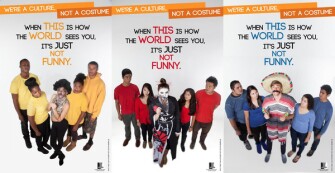As Halloween draws closer, students (and some teachers!) are busy picking out their costumes. Unfortunately, students don’t always pick the most appropriate costumes. Teachers could be in a position to help change that.
Adrienne Keene, a post-doc researcher in Native American studies at Brown University and the author of the blog “Native Appropriations,” is used to talking about costumes. She publishes detailing the reasons it’s not appropriate to dress as a Native American for Halloween, though she notes that the same arguments can be applied to other races. Her summary of the issue? “Native peoples are a contemporary, LIVING group of people, not a costume ... Stop putting us in the same category as wizards and clowns.”
One of the more pointed responses this issue comes in the form of the “” campaign, which was started in 2011 by a student organization at Ohio University. The campaign features posters pointing out that while white students can put on a costume for one night, people of color can never escape those stereotypes.

Lest you think that the trend of wearing racially or otherwise insensitive costumes is confined to adults and college students, note that stores and online retailers so that children can dress as Indians, Gypsies, and “Little Amigos.” One child’s parents even , the Baltimore Ravens running back suspended this fall by the National Football League for domestic violence. And of course, teens generally pick their Halloween costumes from the adult section.
Talking about costume choices isn’t necessarily part of the job description for teachers. However, teacher AD Midd notes that they to talk about bigger issues: “The problem that racial stereotypes present is that they are borne of ignorance and silence.” By talking about stereotyped costumes, she says, “we enter into a conversation about tolerance, speaking up for one another and our shared social environment.”
What can teachers do about this? In schools that host Halloween parties or allow costumes, it’s relatively easy for teachers to notice inappropriate costumes in their classes and quietly have a word with the student (or, in lower grades, their parents). Some schools even limit students’ costume choices or give them an educational twist. For example, one Connecticut school lets students dress as their during the school’s Fall Fest.
In schools that ban costumes, however, and those that don’t celebrate Halloween—an —teachers may want to take a preemptive approach. Midd suggests using journal prompts to approach the issue in classes where such an assignment is appropriate.
If all else fails, CollegeHumor created a tongue-in-cheek but largely accurate last year that helps students figure out if their costume is racist. BuzzFeed has one too, to determine in a costume. Spoiler alert: Never.
Images of “We’re a Culture, Not a Costume” posters from Ohio University STARS.